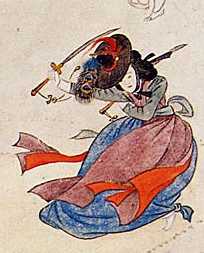Your Cart is Empty


Swords began to appear in the Korean Peninsula around the Bronze Age in the 1st millennium BCE. Being that many of these early-era swords shared similarities to Chinese swords, historians believe some of the region's swordmaking techniques were borrowed from its neighbor. Nonetheless, traditional Korean swords still contained their own unique characteristics, including a scabbard, a ring-shaped pommel, tassels and a wide sword guard.
The Three Kingdoms Period
Swordmaking in Korea took off during the Three Kingdoms period. This period, as the name suggests, refers to three separate eras during which the region was ruled under a specific kingdom. Long swords produced during Korea's Three Kingdoms period were typically used by cavalry and commanders as opposed to infantry. Infantry, on the other hand, used spears and bows to engage enemies.
Throughout the Three Kingdoms period, Korea's swordmaking craft was still rudimentary. Their swords were somewhat weak and often susceptible to damage; thus, limiting their utility in the battlefield.
The Joseon Era
Following the Three Kingdoms period, however, was the Joseon era (15th to 19th centuries), which was arguably even more instrumental in shaping the region's swordmaking craft.
Swords produced during the Joseon era were made with the highest quality steel. Prior to this time, Korean swords were relatively weak due to the low-quality steel used in their construction. Like swords produced in feudal Japan, however, those made during the Joseon period in Korea were stronger and less susceptible to breakage. Korean swordsmiths discovered that using a higher concentration of carbon led to stronger steel and better swords -- a technique that helped Korea perfect its swordmaking craft.
Among the most popular traditional Korean swords produced and used during the Joseon era include the jedok geom and bonguk geom.